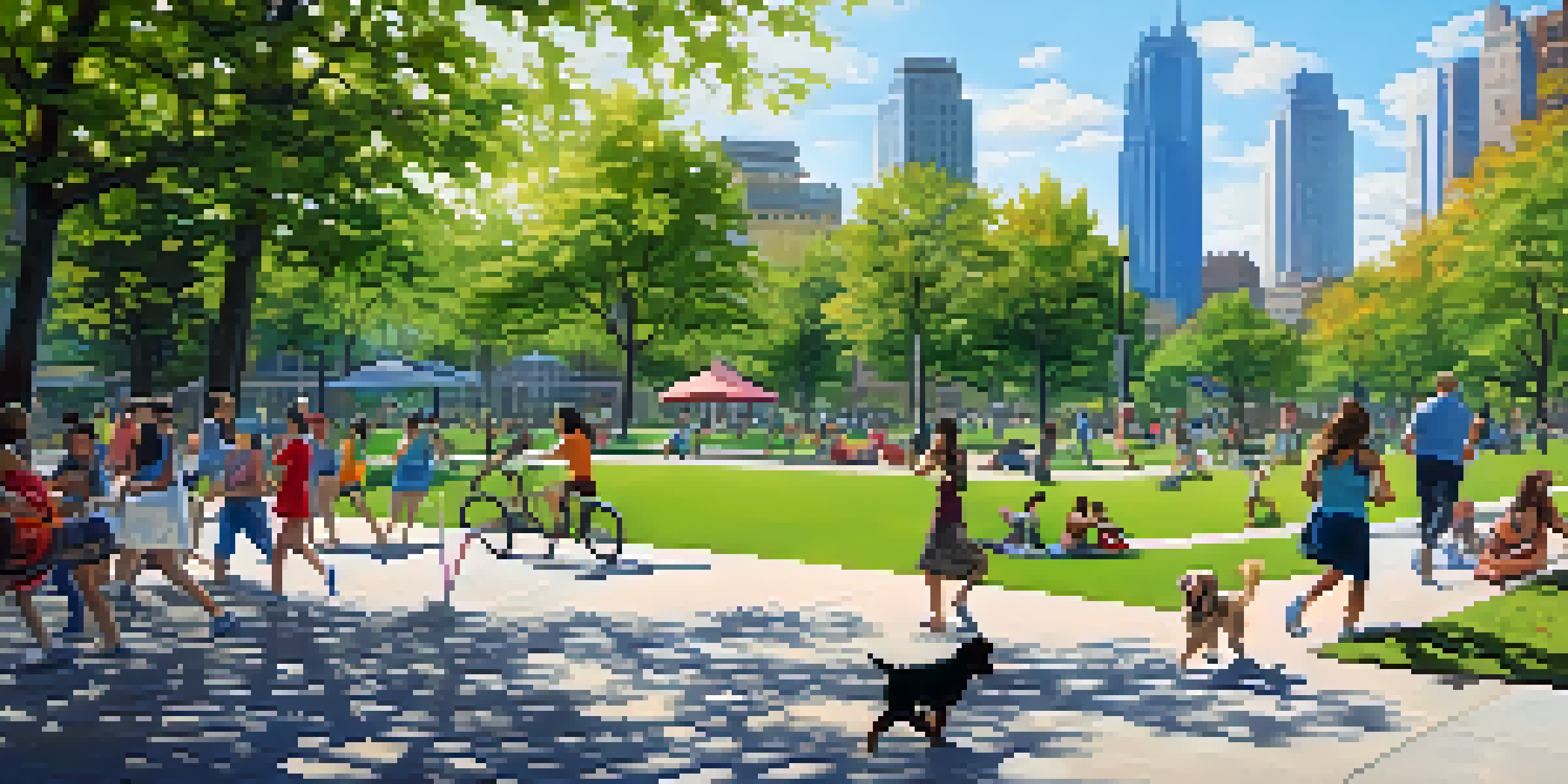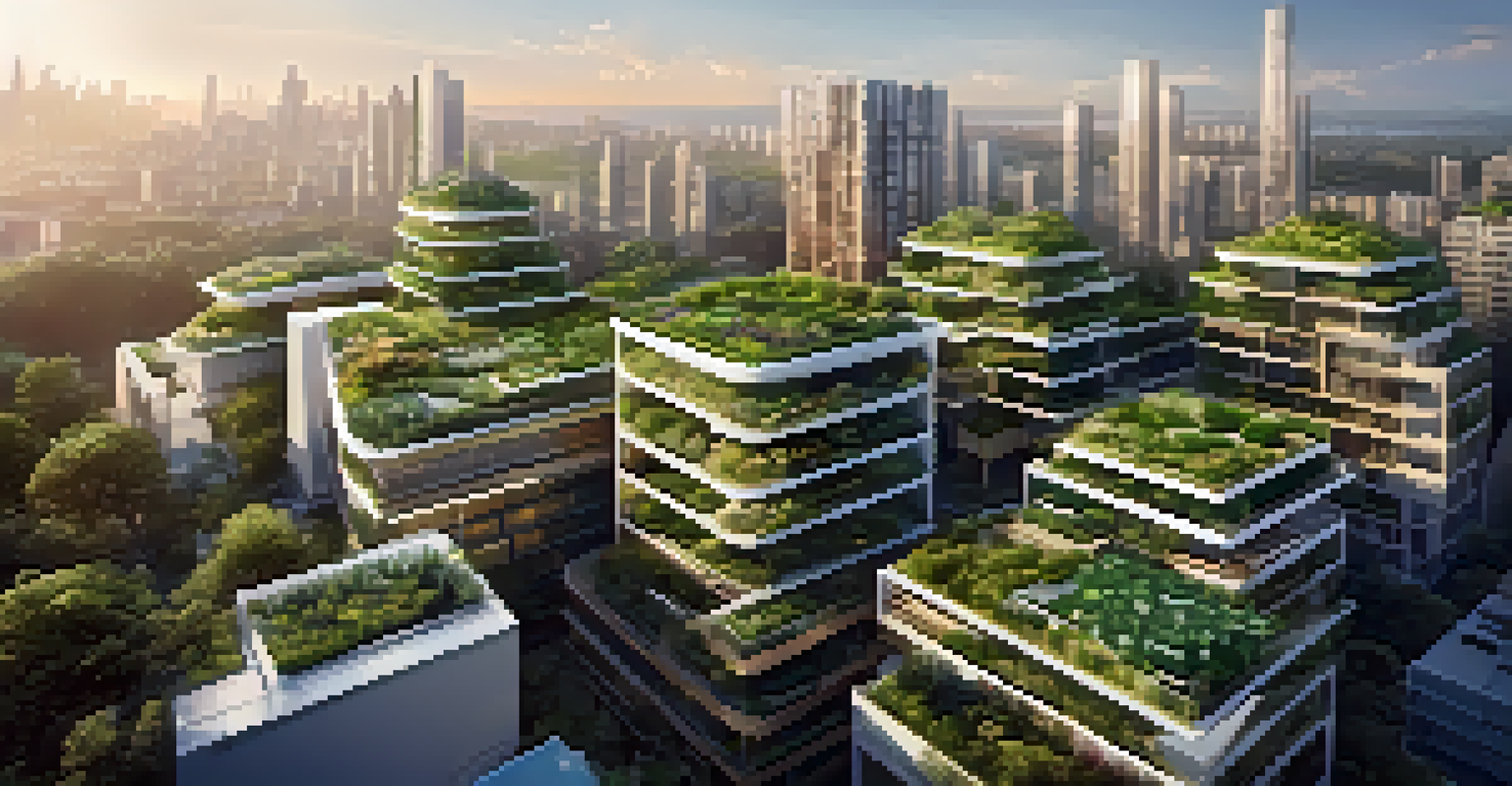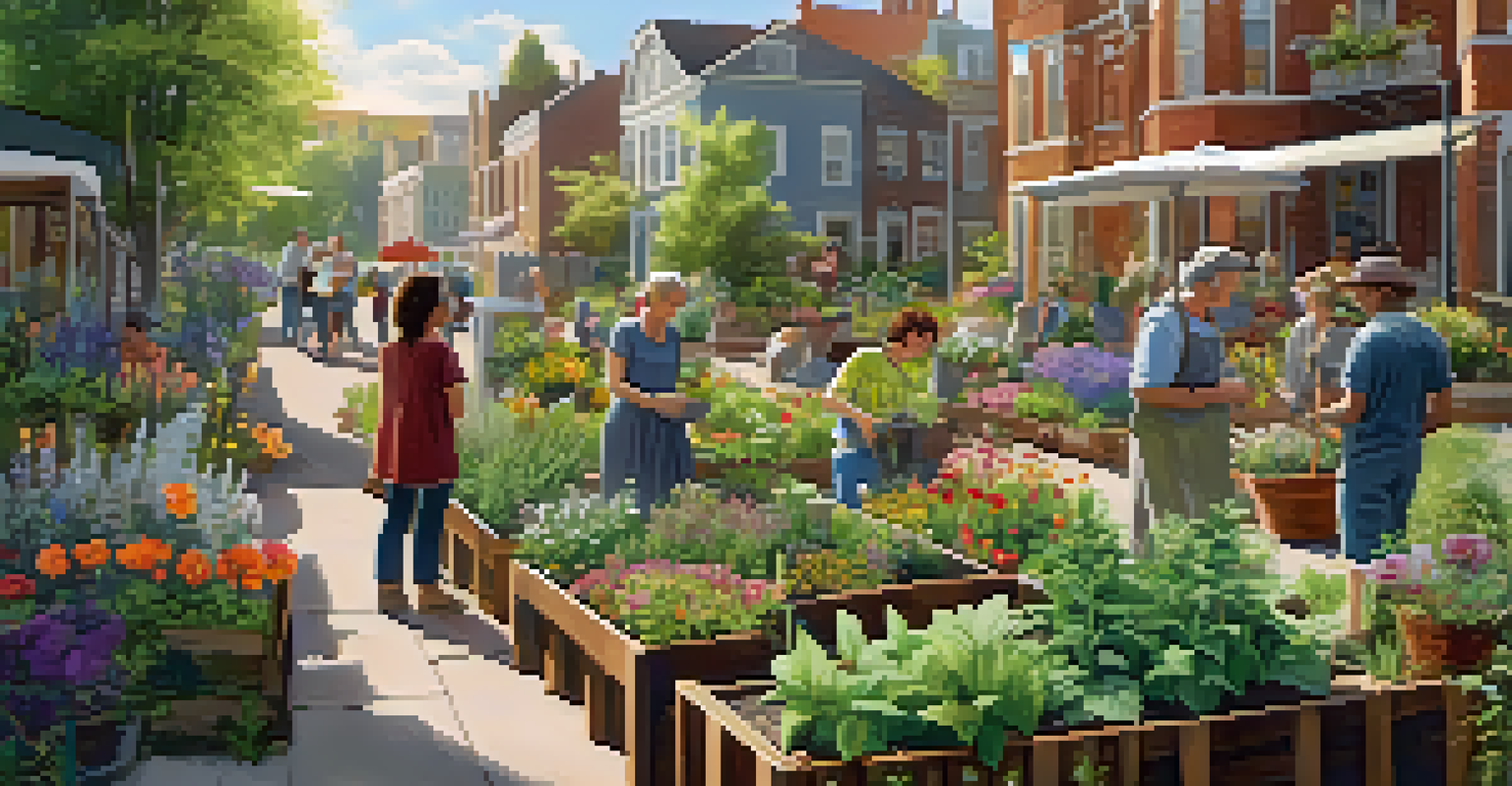Urban Green Spaces: Reducing Heat Island Effect in Cities

Understanding the Heat Island Effect in Urban Areas
The heat island effect occurs when urban areas experience higher temperatures than their rural surroundings. This phenomenon is primarily due to human activities, such as the extensive use of concrete and asphalt, which absorb and retain heat. As cities grow and more green spaces are replaced with buildings, the temperatures can rise significantly, impacting the local climate and residents’ comfort.
The best time to plant a tree was twenty years ago. The second best time is now.
In many cities, temperature differences can reach up to 5 degrees Fahrenheit or more, especially during summer months. This increase can lead to heightened energy costs as air conditioning use surges, as well as increased health risks for vulnerable populations. The heat island effect isn't just uncomfortable; it can also exacerbate air pollution and contribute to climate change.
Understanding this phenomenon is crucial as we explore solutions that can help mitigate its impact. By recognizing the causes and consequences of the heat island effect, we can better appreciate the significance of implementing urban green spaces.
The Role of Urban Green Spaces in Cooling Cities
Urban green spaces, such as parks, gardens, and green roofs, play a vital role in reducing the heat island effect. These areas provide shade and release moisture into the air through a process called evapotranspiration, which cools the surrounding environment. As temperatures drop in these green zones, the overall temperature of the city can also be positively affected.

For instance, a study found that cities with abundant trees and parks can be up to 10 degrees cooler than areas dominated by concrete. This cooling effect not only enhances the comfort of city dwellers but also reduces the energy demand for cooling systems, leading to lower electricity bills and a smaller carbon footprint.
Heat Islands Raise Urban Temperatures
Urban areas can be up to 5 degrees Fahrenheit warmer than rural zones due to human activities and reduced green spaces.
By integrating more green spaces into urban planning, city officials can create a more sustainable and livable environment. These spaces not only combat the heat but also contribute to biodiversity and improved air quality, making them essential for healthy urban living.
Benefits of Increased Urban Greenery
The benefits of increasing greenery in urban settings extend far beyond temperature reduction. Green spaces promote mental well-being, providing residents with areas for relaxation and recreation. Studies have shown that spending time in nature can reduce stress, improve mood, and enhance overall quality of life, which is especially important in bustling city environments.
In every walk with nature, one receives far more than he seeks.
Furthermore, greenery can improve air quality by filtering pollutants and producing oxygen. Plants act as natural air purifiers, absorbing carbon dioxide and other harmful substances, which can be particularly beneficial in densely populated urban areas plagued by high pollution levels. This not only contributes to a healthier atmosphere but also fosters a more vibrant community.
Finally, urban green spaces can also boost property values and attract tourism. Areas with parks and gardens tend to be more desirable, leading to greater investment and revitalization of neighborhoods. This economic impact reinforces the importance of prioritizing green initiatives in urban development.
Designing Effective Green Spaces in Cities
Effective design is key to maximizing the benefits of urban green spaces. Planners and architects must consider factors such as location, size, and accessibility to ensure that these areas are welcoming and functional for all community members. Thoughtful design can create spaces that invite residents to engage with nature, whether through walking paths, playgrounds, or community gardens.
Incorporating native plant species can also enhance the ecological benefits of these green areas. Native plants are better adapted to local climates and require less maintenance and water, making them an ideal choice for sustainable landscaping. These choices not only support local wildlife but also help in conserving water resources.
Green Spaces Cool and Benefit Cities
Parks and gardens reduce heat, improve air quality, and enhance mental well-being for city residents.
Moreover, involving the community in the design process can lead to a greater sense of ownership and stewardship over these spaces. When residents have a say in how their parks and gardens are shaped, they are more likely to use and care for them, creating a vibrant and engaged community.
Examples of Successful Urban Green Space Initiatives
Cities around the world have successfully implemented urban green spaces to combat the heat island effect. For example, New York City's High Line is an elevated park built on a former railway line that has transformed an industrial area into a lush green space. This project not only cooled the surrounding area but also revitalized the neighborhood and attracted millions of visitors each year.
Likewise, Singapore has embraced urban greenery through its 'Garden City' initiative, integrating gardens and green roofs into buildings and public spaces. This approach has significantly reduced urban temperatures and enhanced the city’s appeal as a tourist destination. The commitment to greenery has also fostered biodiversity and improved the quality of life for residents.
These examples illustrate that with creativity and commitment, cities can develop green spaces that provide multiple benefits, including cooling effects, improved air quality, and enhanced community engagement. Such initiatives serve as models for other urban centers looking to create more sustainable environments.
Challenges in Implementing Urban Green Spaces
Despite the clear benefits, implementing urban green spaces can come with challenges. Limited space in densely populated areas often makes it difficult to carve out room for parks and gardens. Additionally, financial constraints may hinder cities from investing in green infrastructure, especially in areas where budgets are already stretched thin.
Community engagement is another critical factor that can pose challenges. Not all neighborhoods have the same level of resources or interest in developing green spaces, which can lead to disparities in access to nature. Ensuring that all communities have equitable access to green spaces requires a concerted effort from city planners and local governments.
Successful Green Initiatives Globally
Cities like New York and Singapore have successfully implemented green spaces that mitigate heat and boost community engagement.
Lastly, ongoing maintenance of green spaces is essential for their longevity. Without proper care, these areas can quickly become neglected, losing their appeal and benefits. Cities must prioritize the maintenance of these spaces to ensure they remain vibrant and accessible for future generations.
The Future of Urban Green Spaces and Heat Mitigation
Looking ahead, the future of urban green spaces holds promise as cities continue to confront the challenges posed by climate change. As awareness of the heat island effect grows, more municipalities are recognizing the importance of integrating greenery into their urban landscapes. This shift not only addresses immediate temperature concerns but also supports long-term sustainability goals.
Innovations in urban design, such as vertical gardens and green walls, are emerging as exciting solutions that can maximize limited space while providing significant cooling benefits. These creative approaches can transform otherwise unused areas into vibrant green spaces that enhance the urban environment.

Ultimately, the collective efforts of city planners, residents, and policymakers will play a crucial role in shaping the future of urban green spaces. By prioritizing these initiatives, we can create more resilient cities that not only combat heat but also foster healthier, happier communities.